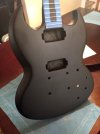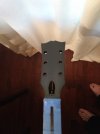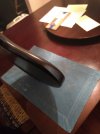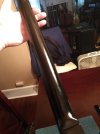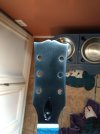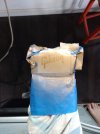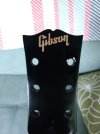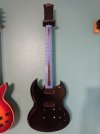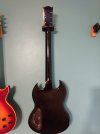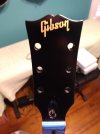CipherHost
Experienced
Here are some close ups of the poor technique I used in both Z-Poxy and color applications. I have not found any good info on removing the spots (sanding flattens the spots, but doesn't remove them). I'm going to try using lacquer thinner on a Q-tip to remove them. I did find a good article on thinning epoxy. It seems things would have turned out better had I heated the bare wood with a hair dryer before applying the Z-Poxy. The heat reduces the viscosity of the epoxy when applied. This allows it to flow nicely into those little valleys you see in the photos (I'm hoping). Thinners added to the epoxy can weaken it and result in cracking over time. Not something I want for this project. Turns out Scotch Bright pads work pretty good at smoothing out the color coat without being too abrasive or any remnants that 0000 might leave.
Spots
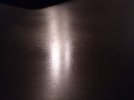
Valleys on the horn.

Valleys on the back. You can see the spots here too.
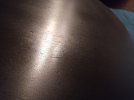
Spots

Valleys on the horn.

Valleys on the back. You can see the spots here too.


